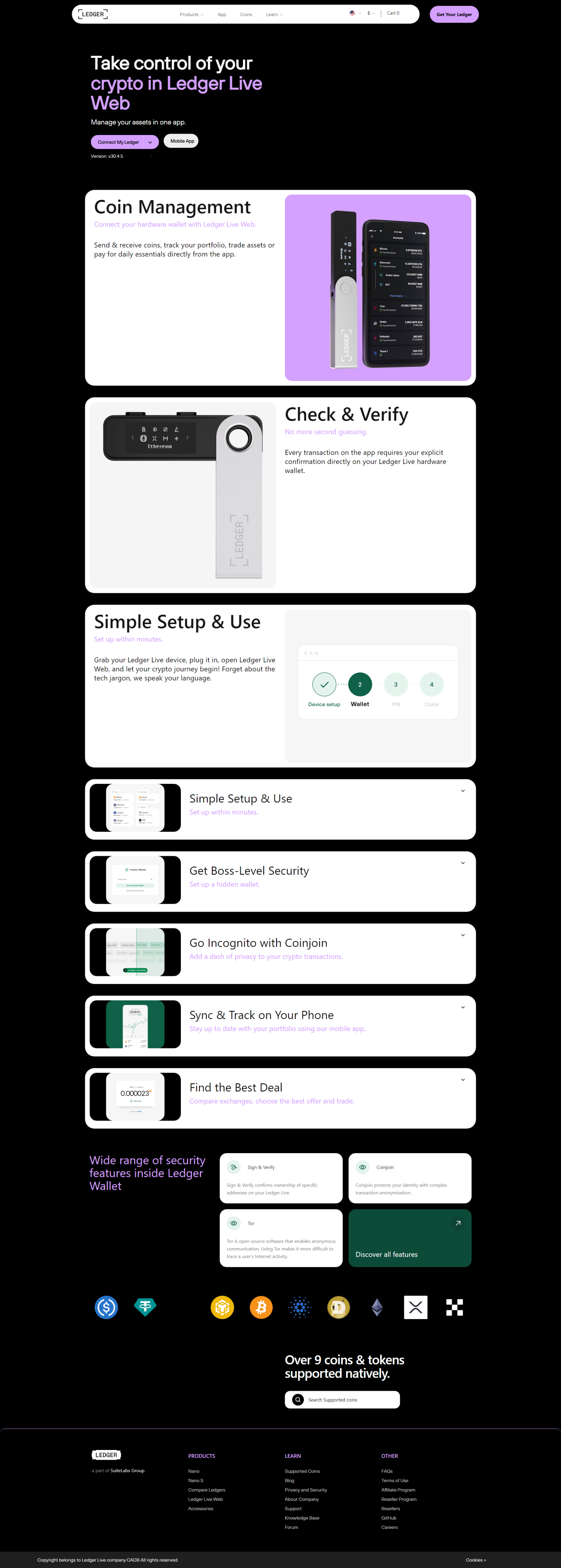A simple, secure guide to setting up and using your device
Welcome to Your New Crypto Security Companion
Setting up a hardware wallet for the first time can feel a little intimidating, especially if you’re new to the world of self-custody and crypto security. This guide walks you through the entire process—from unboxing your device to installing the companion app and securing your recovery phrase—so you can confidently store and manage your digital assets. Although this page is inspired by common onboarding steps used by leading wallet manufacturers, the instructions below are provided as general educational content and are not affiliated with any official brand or service.
Important: Always set up your device yourself. Never use a recovery phrase that was given to you by someone else, printed in the box, or shared online. Your recovery phrase must be generated securely by your own device.
1. Unboxing and Checking Device Integrity
When you open your hardware wallet package, take a moment to inspect everything inside. You should typically find the device, a USB cable, a set of blank recovery sheets, and a quick-start card. The packaging should appear professionally sealed, with no signs of tampering. If anything looks off—damaged box, loose components, unfamiliar markings—pause the setup and verify the device’s legitimacy with the manufacturer before proceeding.
Your hardware wallet protects your private keys by storing them offline. Therefore, the physical safety of your device is just as important as digital security. Treat it like any other sensitive financial tool.
2. Powering On and Navigating Your Device
Plug your wallet into your computer using the included cable. Most devices will power on automatically. You will be guided through initial steps on the small built-in display. Navigation typically involves using physical buttons to scroll through options and confirm or cancel actions. Take a moment to get familiar with these buttons—they serve as your primary interface and are intentionally simple to minimize the attack surface.
Next, you’ll be asked whether you want to configure the device as new or restore an existing wallet. Choose “Set Up as New Device” if this is your first time.
3. Creating a Secure PIN
One of the first steps is choosing a PIN code. This PIN prevents unauthorized individuals from accessing your wallet if they get hold of your device. Choose a number that you can remember but that others will find difficult to guess. Avoid using birthdays, simple sequences, or repeating numbers. If you enter the wrong PIN too many times, many devices will reset themselves as a security precaution.
4. Writing Down Your Recovery Phrase
Your recovery phrase—also known as a seed phrase—is the most important component of your wallet setup. It usually consists of 12, 18, or 24 randomly generated words. These words give you complete control over your crypto assets and allow you to restore your wallet on a new device if the original is lost or damaged.
Write the words down carefully on your recovery sheet. Double-check each word in the correct order. Do not store photos or digital copies of the phrase, as doing so increases your vulnerability to hacks, malware, or cloud breaches.
Store the written phrase somewhere safe—ideally in a fireproof, waterproof location or on a metal seed backup plate. Never share it with anyone.
5. Installing the Companion App
Once your device is set up, you’ll need a companion desktop or mobile app to manage accounts, install apps for specific cryptocurrencies, and initiate transfers. Visit the official website of your hardware wallet manufacturer and download the application directly from them—never from unofficial app stores or third-party links.
The app will guide you through pairing your device, verifying addresses, and managing portfolios. This software acts as a user-friendly interface, while your device handles the actual signing of transactions.
6. Adding Crypto Accounts and Making Your First Transfer
With the app installed, you can begin adding cryptocurrency accounts. Each account corresponds to a specific blockchain, and your hardware wallet may prompt you to install a small application for each currency you plan to use.
When receiving crypto, always confirm the address on your device screen. This helps protect you from malware that might alter addresses on your computer. After sending assets to your wallet address, wait for network confirmations to appear in your app.
7. Ongoing Security Best Practices
Maintaining long-term security is just as important as correctly setting up your wallet. Always keep your firmware up to date, download software only from official sources, and be cautious of phishing attempts. Remember that no legitimate service will ever ask for your recovery phrase.
Treat your hardware wallet with the same care you would give to your most valuable financial documents. With proper handling and awareness, your device can provide long-lasting, reliable protection for your digital assets.
